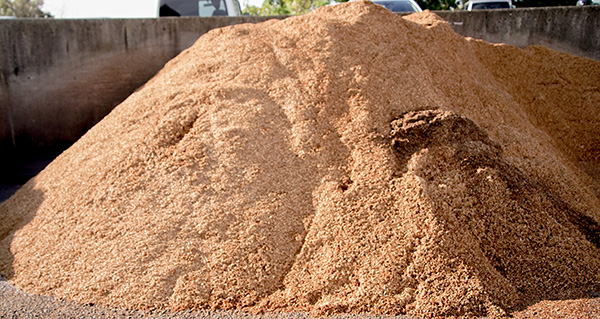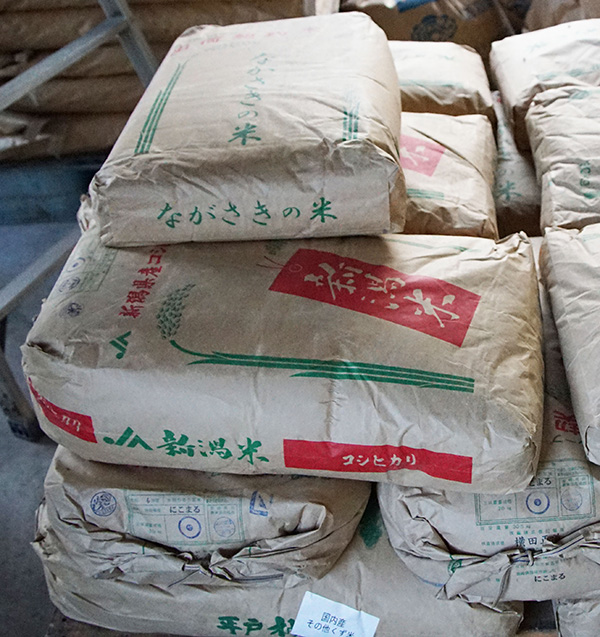Login or Subscribe
You must be logged in to access this content
Subscribe for free access to Japanese Exotic Mushroom Journal and gain insider knowledge on effective cultivation methods for Japanese mushroom species. Elevate your skills with expert tips and innovative technologies to master the art of growing Japanese exotic mushrooms.
◆ Discover exclusive Japanese mushroom cultivation techniques
◆ Learn innovative methods to enhance mushroom quality and yield
◆ Tap into Japan's rich heritage for unique growing insights
◆ Discover exclusive Japanese mushroom cultivation techniques
◆ Learn innovative methods to enhance mushroom quality and yield
◆ Tap into Japan's rich heritage for unique growing insights
Subscribe Now for Free Login
Substrate Management
Reviewing substrate, nutrition supplements and pH stabilizers in exotic mushroom cultivation
Overview
I have written about substrate piecemeal, both by species, and when describing farms I have been too. There remains a big division in the Western market, between the North American and European markets, a gap that is, unfortunately, growing wider. Both regions remain heavily based on a single species, Agaricus bisporus, commonly known in English as the button mushroom. Both cremini/brown button mushrooms and portabella mushrooms belong to this species. Thus, invariably any professional in the Western agricultural sector who has experience with mushrooms, has worked with button mushrooms. Essentially all domestic suppliers of equipment and growing materials also work with button mushrooms. The result is a growing system that is hyper-specialized around a single, rather unique species of mushrooms.Button mushrooms are secondary saprophytes, meaning the environment they are suited for and live in is one where initial decomposition processes have already occurred. They grow dense mycelial mats, and grow in substrate that is so selective to their species - and are very aggressive colonizers, strong against most competitors - that infection pressures are low and they can be grown at massive scale in huge beds of substrate. While not new information to anyone working with them, I want to emphasize this because button mushrooms are well-suited to a huge scale of growing rooms and many automation systems.This issue is particularly keen in Europe. The specialization is all in one species, making the European industry a type of monoculture. This means anyone trying to grow anything else has few to no options within the domestic market when it comes to designing farm practices, facilities, or even purchasing machinery and bags. In addition to this, the highly restrictive regulatory burdens of the EU and the CE certification basically foreclose the import (at least the legal use on a farm) of nearly any equipment produced in East Asia.So how to deal with substrate?
Exotic Mushroom Substrate
There are six primary species of edible fungi that use deciduous sawdust: shiitake, wood ear, maitake, shimeji, enoki, and nameko. Pleurotus species, including both eryngii and common oyster species can use coniferous sawdust, as can hanabiratake; some research suggests lion’s mane mushrooms can as well, albeit with spottier yields. If the coniferous sawdust is fermented for an extended period of up to a year and well dried prior to processing, it is possible to use it for all of the above deciduous species, but this adds excessive cost and the cultivation results are not as ideal as with deciduous sawdust.I have written this many times before, but the management of substrate for an exotic mushroom farm is not in and of itself extremely complicated. The key points are: fresh sawdust, fast turnover, proper storage facilities for sawdust (though if your turnover is fast enough even this is less important). Dried wood chips are also usable, though the same caveats apply, and farms need to take ample time to rehydrate prior to autoclaving.Total substrate composition can look very complicated, but typically best practice in Japan when using sawdust is between 15~20% nutrition supplements and pH stabilizers. This is the standard in bag cultivation systems. Bottle cultivation systems using ground corncob use more supplementation to add nitrogen and make up for the lack of mineral density in corncob. When using ground corncob in bottle systems, water absorption and structure are also important considerations that drive greater supplementation.Here is a list of nutrition supplements currently in wide industrial use at actual farms in Japan:Okara (soybean pulp from tofu production), soybean hulls, wheat bran, rice bran, cacao husks, cottonseed hulls, beer lees (spent brewer’s grain), sugar beet pulp, rice husks, and bagasse. Not in use in Japan but theoretically possible are things such as spent grains from whiskey or vodka production, and the processed hulls of other bean species. Spent coffee grains are also a good nitrogen supplement, with the caveat that they must be used fresh or processed and dried quickly, and they tend to lower pH. Every one of these supplements has different nutritional profiles, and different uses in substrate. The possibilities are immense, even when you remove unproductive/uneconomic permutations, but the number of possibilities alone does not make for complexity.In Japan, I have not seen any farms use greater than 4 supplements, and 3 is more common, so it is not about phenomenal complexity in each substrate recipe, but about optimization and tight management of the ratios.Standard pH stabilizers in Japan are:Lime and ground oyster shells. Farms with a biomass reactor may add a portion of the wood ash, which is also alkaline. While not used in Japan, gypsum is also a potential pH stabilizer. There is also interest in additional additives that have a signaling effect, speeding up mycelial spread, improving mycelial density and yield while reducing the cycle. For shimeji, some work has found silica powder to be useful, and other researchers have looked into organic acids as well. Calcium-based supplements may be useful both for their pH stabilizing effect and as signaling agent.
- Sacks of rice bran at a Japanese farm. Rice bran is among the most used nutrition supplements in Japan, and nearly universally used.
Production Process
Sawdust/wood chips are poured into a ribbon mixer. Measure water content of the substrate, then calculate the necessary amount of water needed to raise the moisture content of the substrate to the desired target. This will vary between mushroom species, and between bag and bottle cultivation. For shiitake it is averages around 62%. For specialty mushroom species and cultivation systems this varies between 59~70%.It is a good practice to measure pH as well. Substrate varies in pH both by batch and season. Having a one-size-fits-all formula for pH stabilizers is non-optimal; growers can end up with a higher or lower pH than they need this way. As a measure of dry weight, pH stabilizers almost never exceed 1%, so this is a small portion of each batch.Many large farms use pre-mixed substrates that already have the supplementation mixed in, and others also add everything at the same time. On a farm, these measures to save time often win out. However, ideally, a farm would want to mix sawdust/wood chips and water for between 30 minutes and 1 hour first. Nutrition supplements, especially those used to increase nitrogen content like wheat and rice bran (the two principal supplements in Japanese mushroom farming), are also oily. Oil is adsorbent and so it can coat sawdust and cause uneven moisture absorption or for pockets of water to remain inside the substrate. However, many big farms in Japan do this regardless, so the effect is not extremely detrimental.The key point with most specialty mushrooms is that they are primary saprophytes. Most have a relatively long incubation time compared to button mushrooms. All are growing on a “fresh” substrate. I like to explain it as a non-selective substrate; many forms of mold, mildew and other fungal species thrive in this substrate and in the incubation parameters used for common edible species.The nitrate content is quite a bit lower than in button mushroom farming (because you are not composting raw materials or using large quantities of nitrate rich materials like manure) while the mineral content is a bit higher. In addition, species such as nameko, maitake, and to a lesser extent, shiitake, are much less able to outcompete other potential fungi.Sterilization
Quite frankly the single biggest difference between the European market, which is struggling and has fewer producers at any scale producing exotic mushrooms, and the American market, which is booming and thriving, is the sterilization process. Americans are using autoclaves to properly sterilize substrate. Pasteurization at lower temperatures (I have seen as low as 80 degrees) for longer times (8~12 hours or more), is also sufficient so long as other hygiene practices on a farm are sufficient, but pasteurization/sterilization chambers are necessary. The EU’s regulatory system has some ambiguity on this point. A key point remains whether, in practical terms, any autoclave chamber would have a high-risk assessment under CE safety laws, or whether an autoclave would be allowed a medium-risk designation if it ran at under 0.5 bars of pressure, in which case the design requirements differ substantially.Adjusting Japanese autoclaves for medium-risk designation is more practical, and largely just a matter of buying CE-certified valves and some other core components. Unfortunately, these modifications raise the already high price of an autoclave considerably, adding further barriers to European farms.An autoclave is the single most expensive part of a farm. To grow specialty mushrooms, an autoclave is needed. This is my position. If a farm cannot get funding or make that investment, then they are not really serious about making specialty mushroom substrate. While expensive, autoclaves have a solid 20~25-year industrial lifespan, and I have seen models over 30 years old still running given the appropriate maintenance and passing of annual inspections. One way to look at is that a single autoclave is similar to a lifetime farming investment, something quite rare in the agricultural sector.Specialty mushroom substrate is not selective and the mushrooms in question have long incubations and are susceptible, especially in early stages, to infection even with top-quality filter bags. The substrate needs to be sterile prior to spawning, and these quick, heated V mixers offer convenience and speed, but the flipside is that the flash pasteurization is often simply not sufficient. These systems come with their own enormous price tags (several times larger than an autoclave), and have shorter operational lifespans and greater maintenance costs compared to autoclave systems. A producer or a farm can often produce mushrooms, sometimes even with no serious issues, but it is half a matter of luck, and you cannot run a business relationship in a market with tight margins, based on luck. The results are too inconsistent.To make a review list: You want a good, airy substrate (too fine a sawdust will favor anaerobic bacteria in dense and/or wet pockets, and mycelium will often struggle to colonize it for lack of oxygen), with a solid structure, a relatively low C:N ratio (again, you are not composting so you don’t need to test for this; the C:N ratio for specialty mushrooms is essentially dictated by your nutrition supplementation formula), good water retention abilities and proper moisture content.
- The small shot of the inside of a bag cultivation autoclave.





 1-2-13 Honmachi, Komoro city, Nagano prefecture, Japan 384-0026
1-2-13 Honmachi, Komoro city, Nagano prefecture, Japan 384-0026